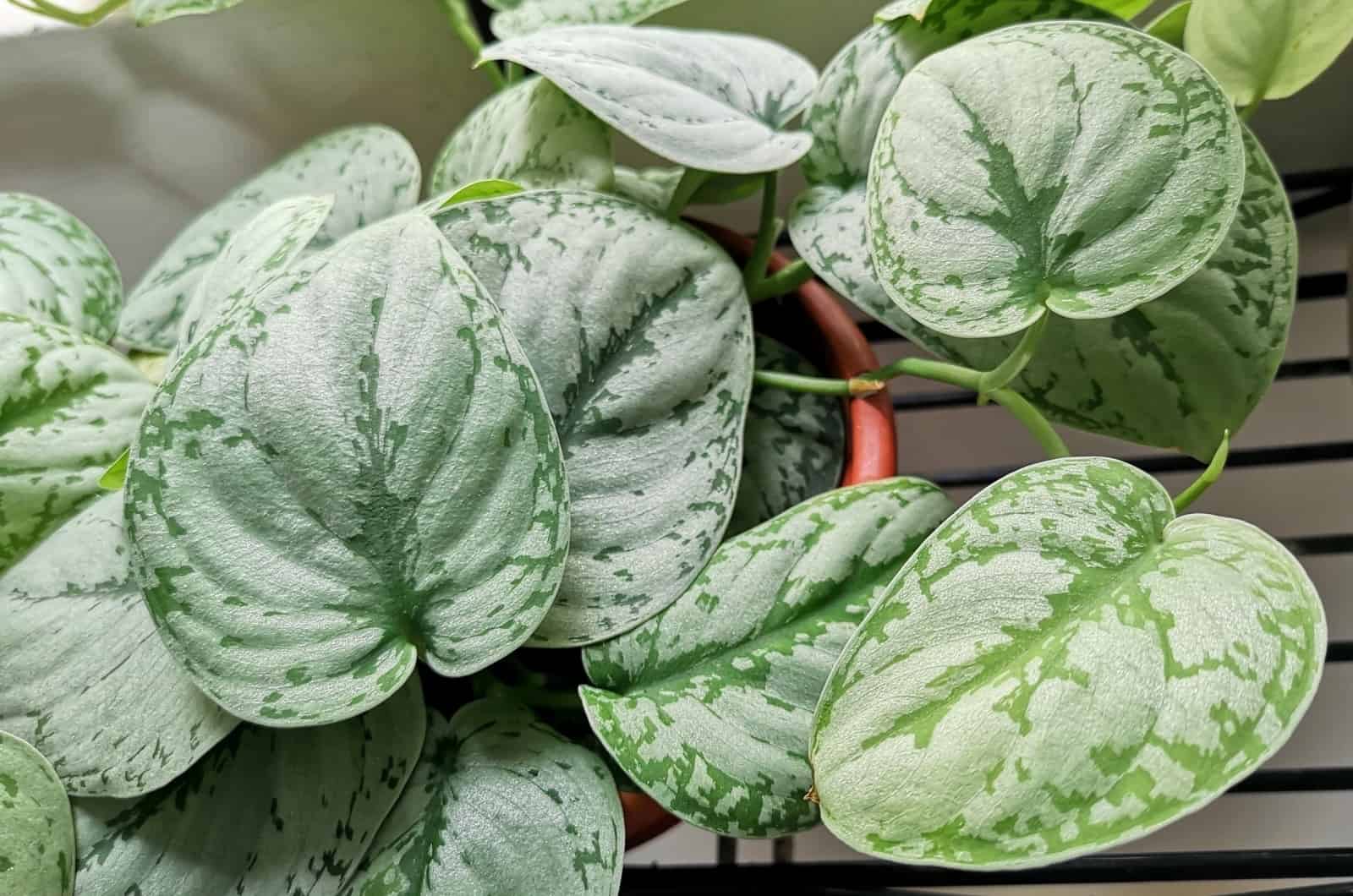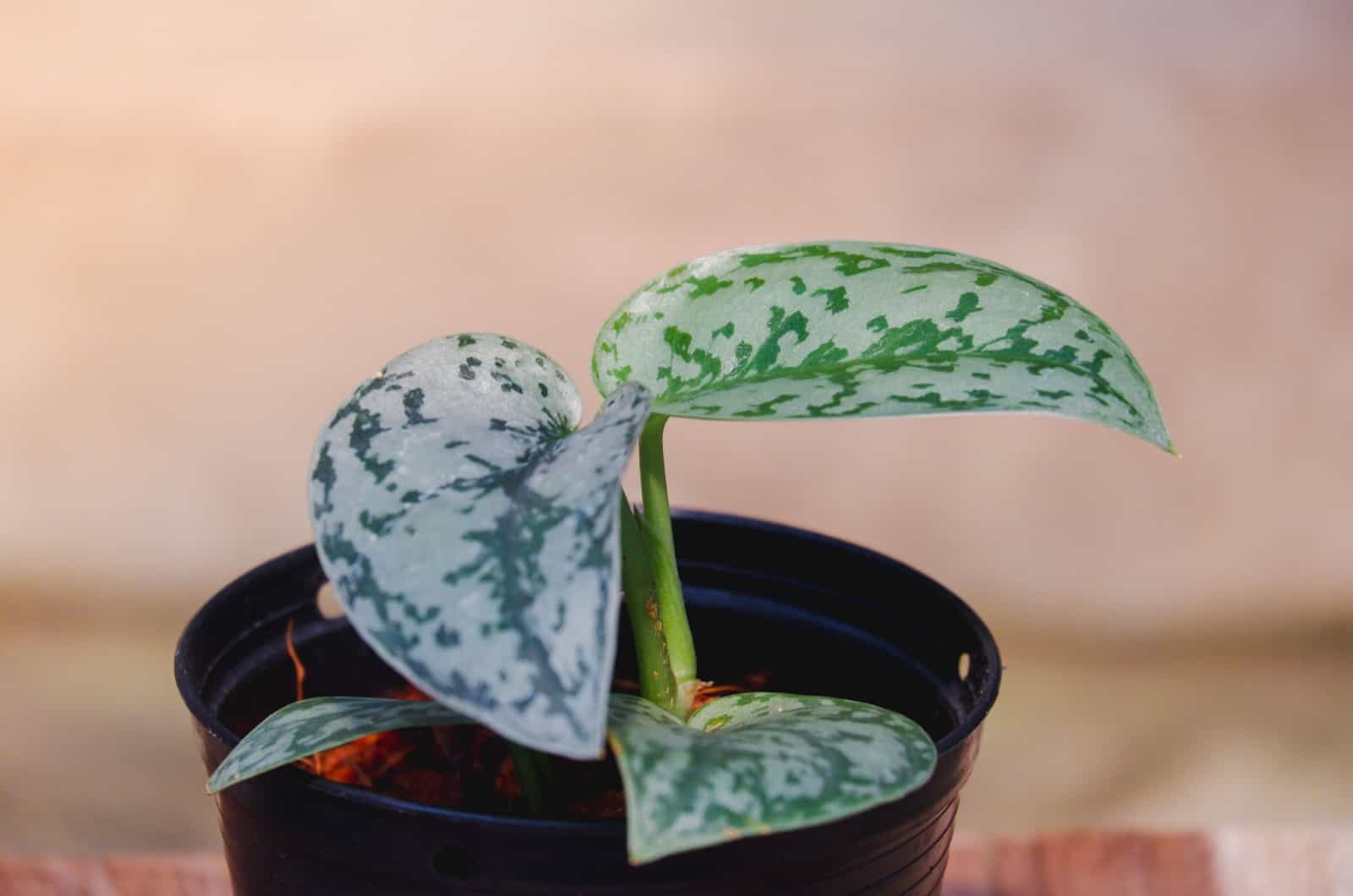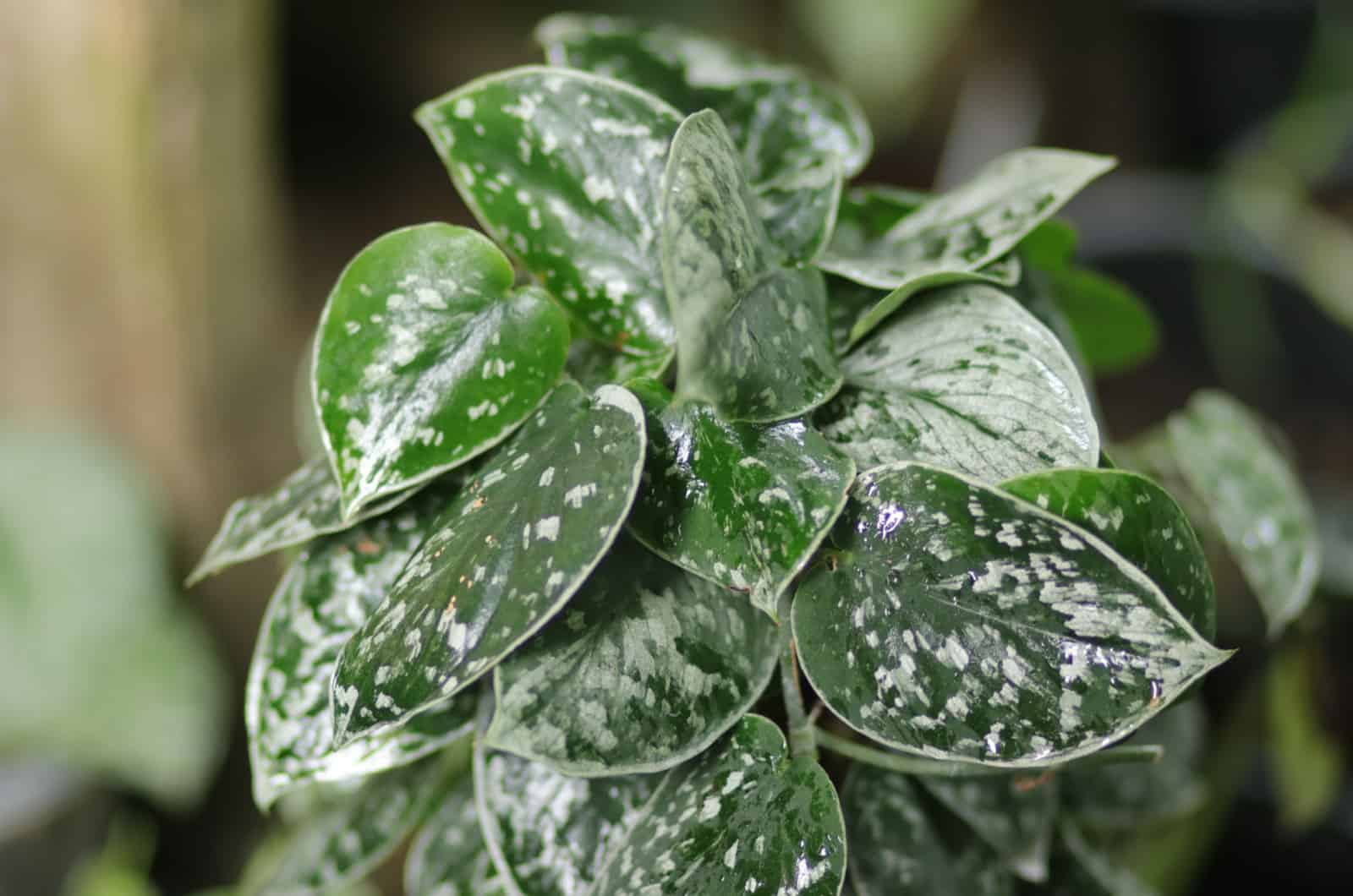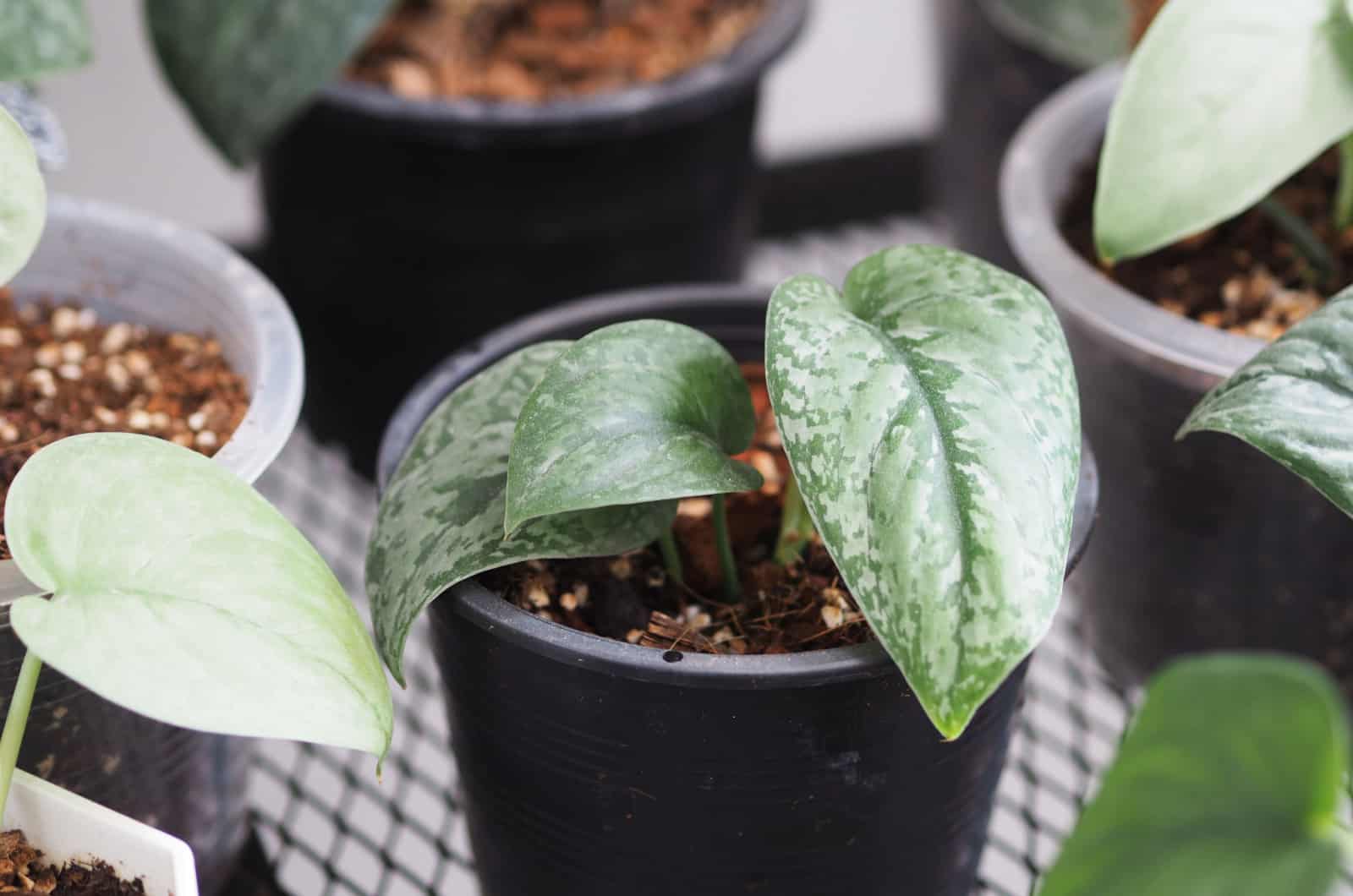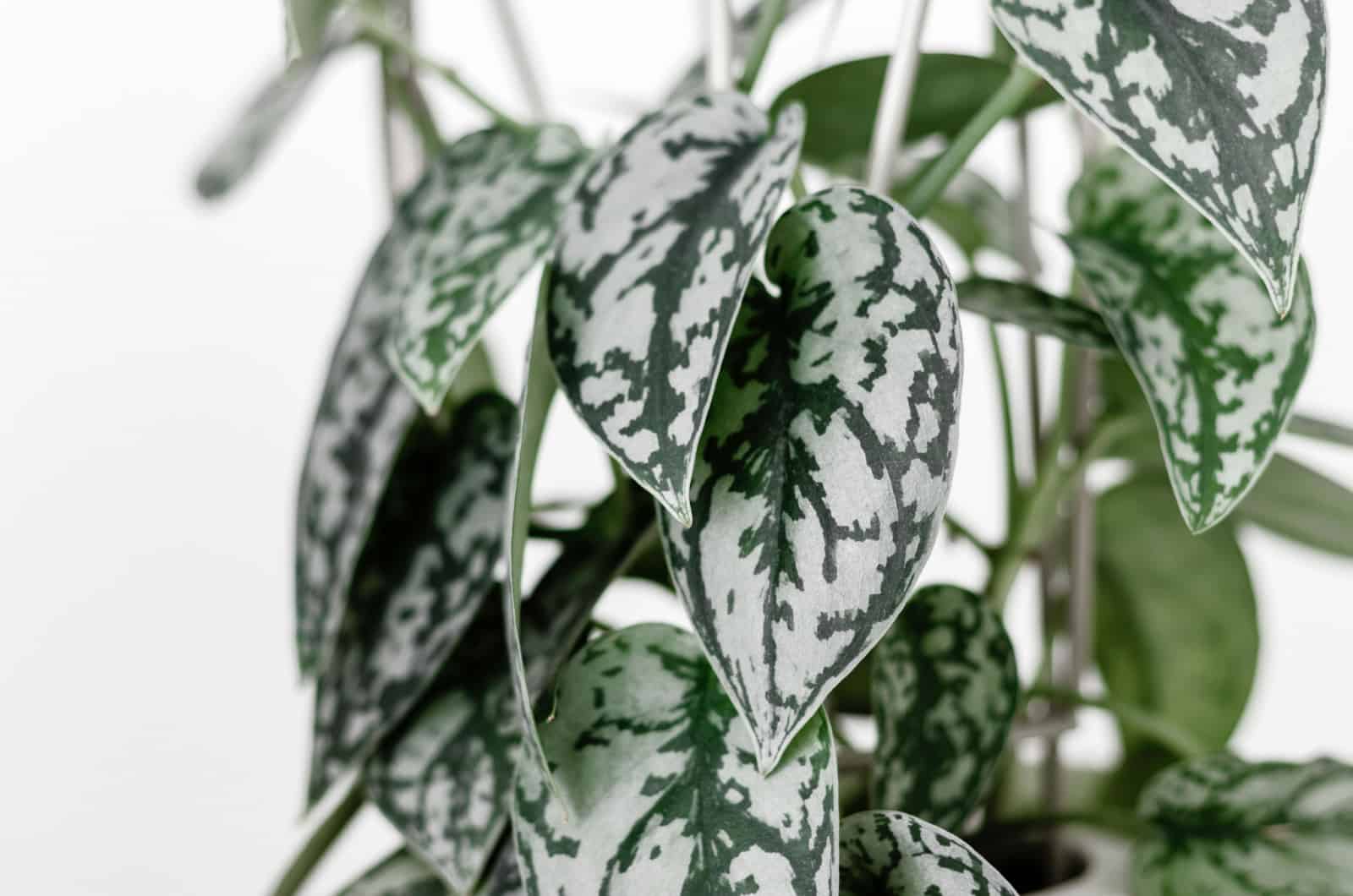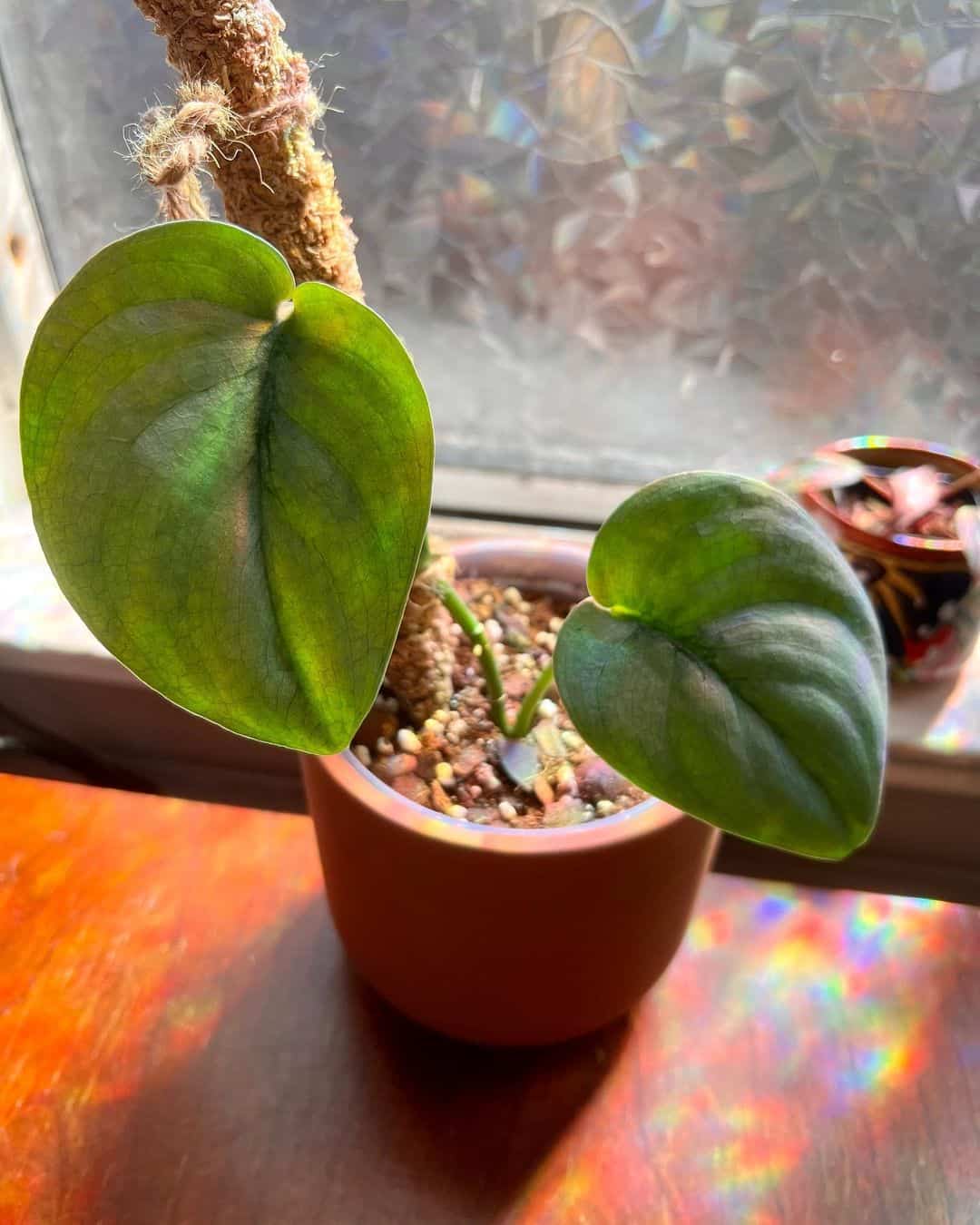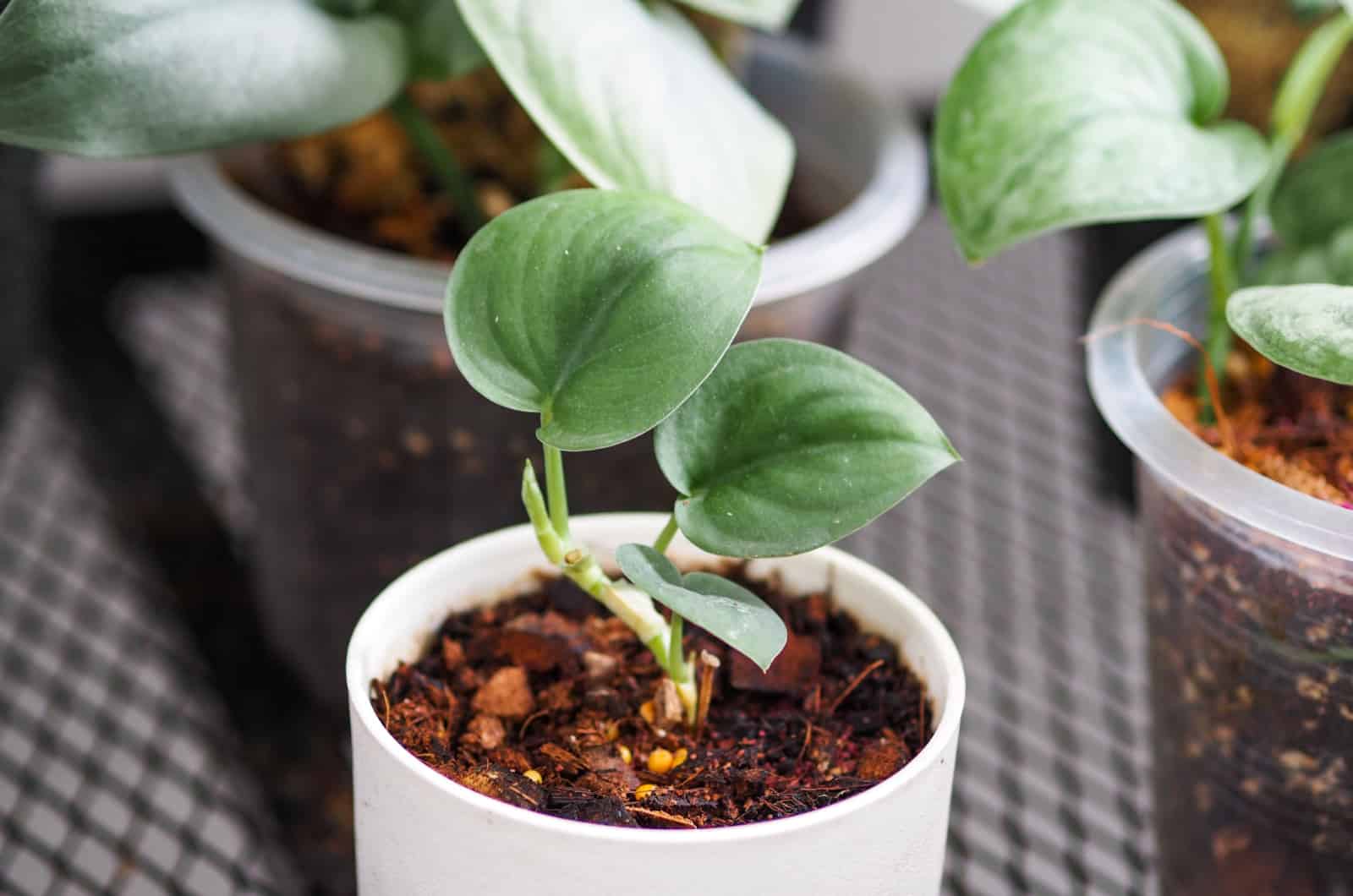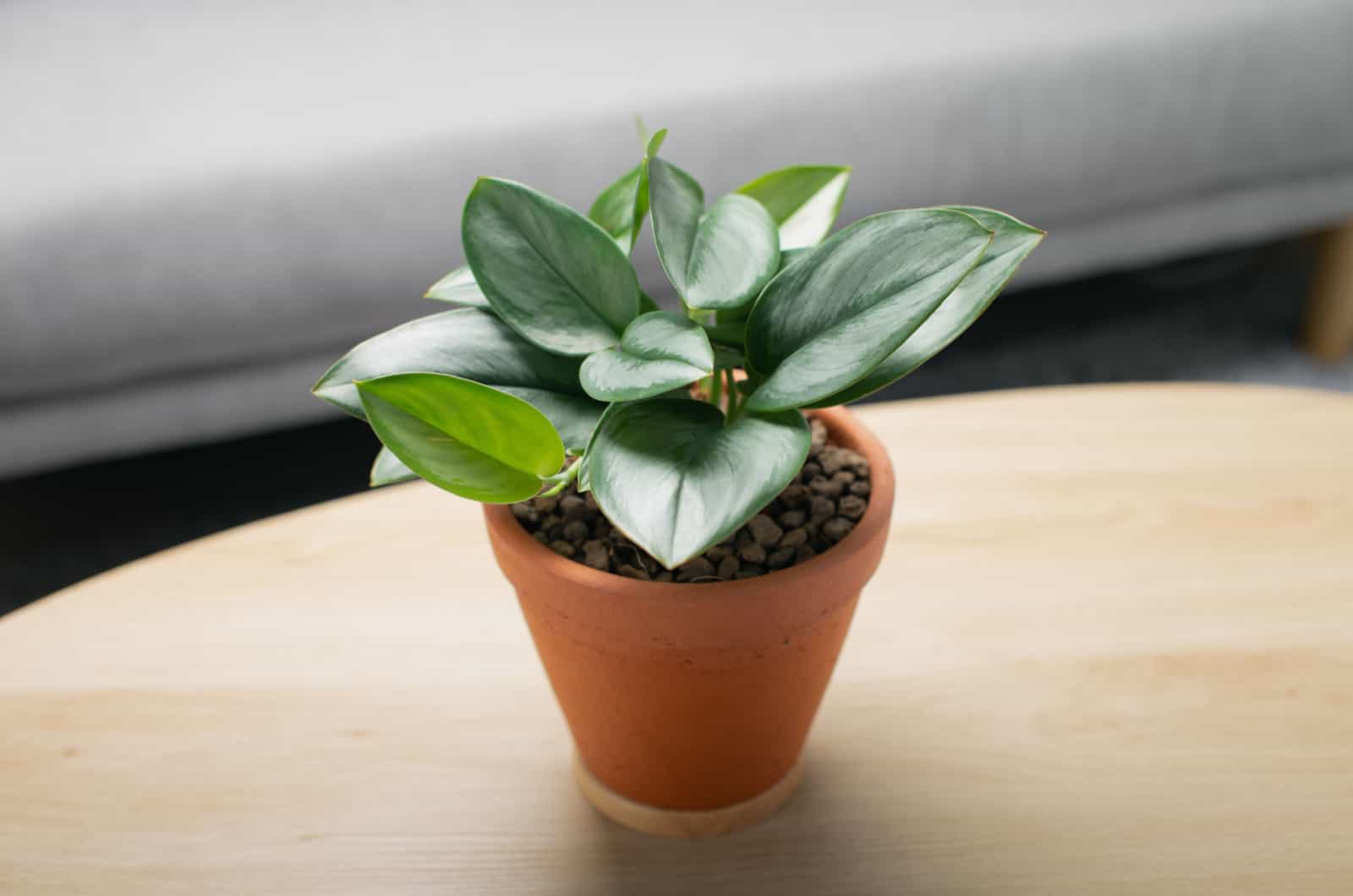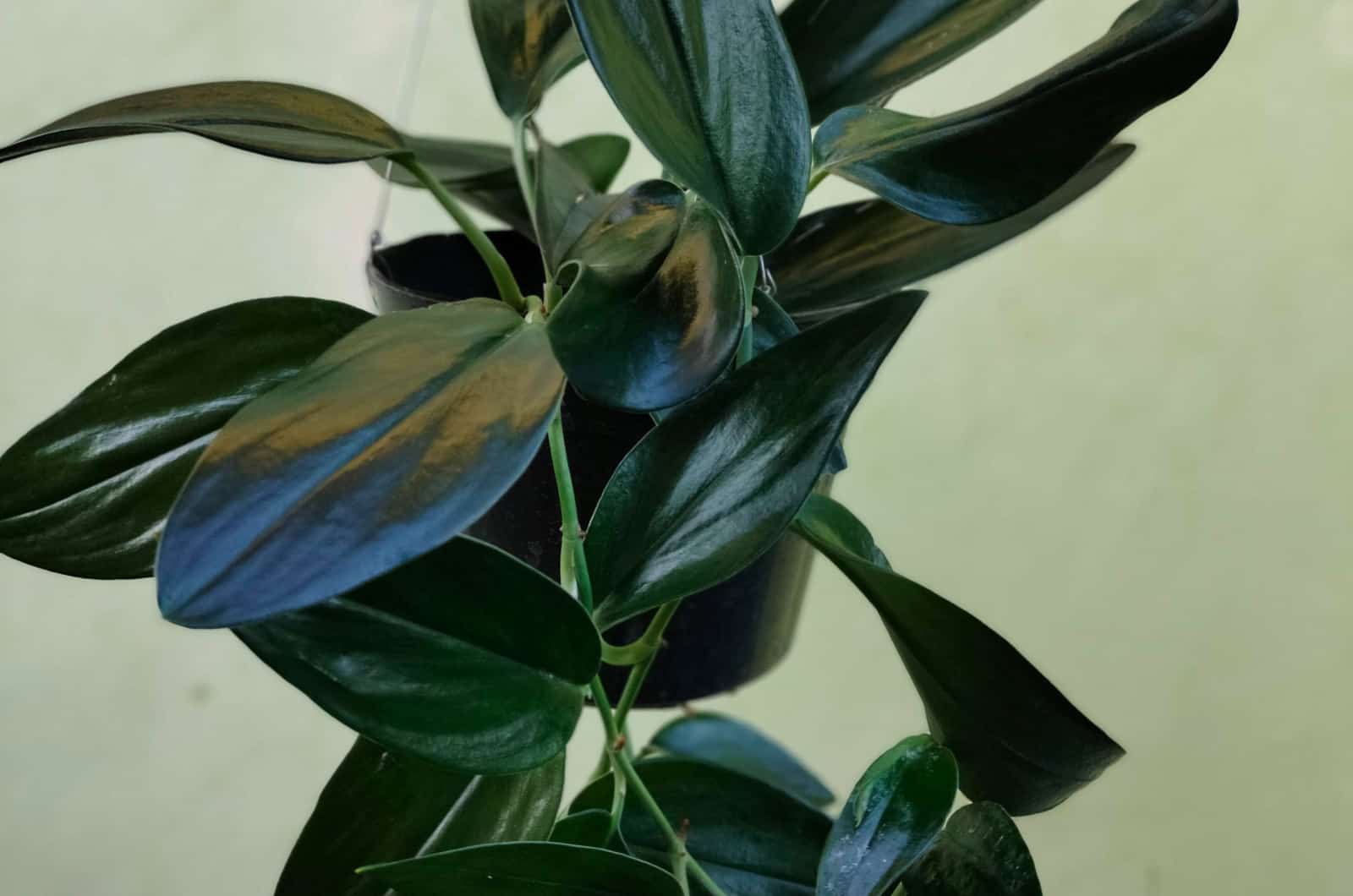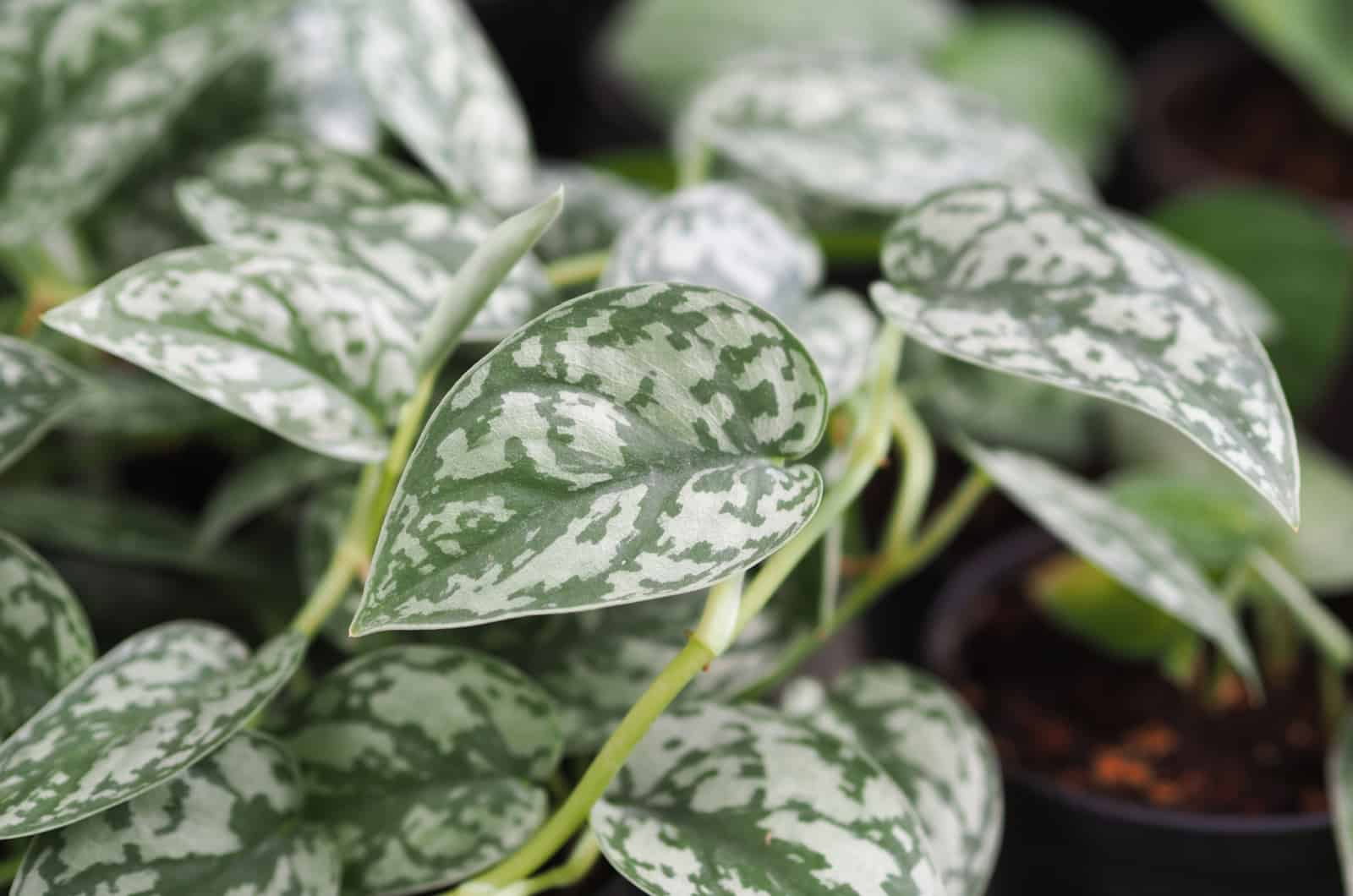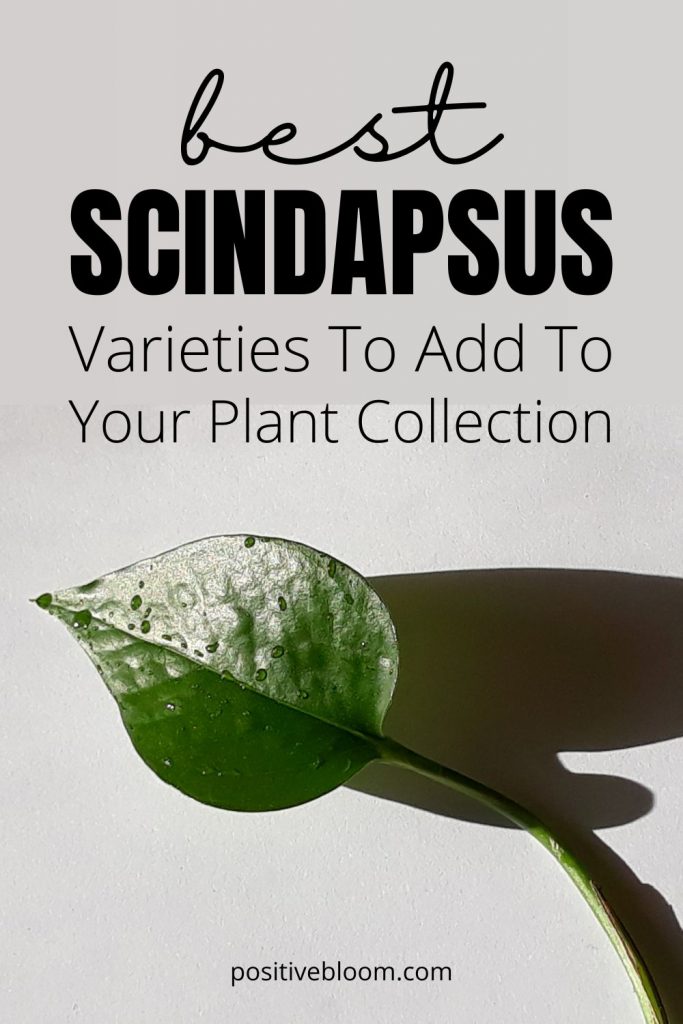I believe that there are many growers out there who don’t know they have a Scindapsus plant in their collections. How come? Well, these plants are commonly mistaken for the famous Pothos, and some varieties are often referred to as Philodendrons.
One thing is for sure; Scinadapsus plants look incredible and unique, and don’t deserve to be mistaken for any other plants.
I’ll show you some amazing Scindapsus varieties and their features in this article so you know how to differentiate the species. I’ll also tell you more about their care requirements and why you should add them to your garden.
Let’s get started!
Scindapsus Varieties
The Scindapsus genus comprises 35 species and is a part of the Araceae family. These species are considered flowering plants, but unfortunately you won’t see them bloom indoors.
You can grow the species of Scindapsus as climbing plants, but they also look amazing when grown in hanging baskets.
Let’s look at the most common Scindapsus varieties and their features!
Scindapsus Pictus ‘Argyraeus‘
Scindapsus pictus ‘Argyraeus’ is a vining plant. What makes it so special are its dark green leaves speckled with silvery, glossy variegation.
It’s often referred to as Satin Pothos and Philodendron silver as it has heart-shaped leaves with a velvety texture.
But, like I said, it’s neither a Pothos nor a Philodendron plant. The leaves are pretty small, but the vines may grow long, which makes this variety ideal for hanging baskets.
Finally, the leaves have silver margins that leave anyone who sees them breathless!
It is generally considered a low-maintenance plant, but it’s not cold-tolerant so lower temperatures may quickly kill it.
Scindapsus Pictus ‘Exotica’
As the name suggests, the Scindapsus pictus ‘Exotica’ is an exotic variety with heart-shaped leaves speckled with sparkling silver variegation. This aroid is also known as Silver Pothos.
It is often confused with the Argyraeus plant, but you can tell them apart by the size and thickness of their leaves; Exotica leaves are larger and thicker.
Another feature of the Exotica variety that makes it different from its cousins is the growth rate. It has a slower growth rate, but if you meet all its requirements you can speed things up.
I grow my Exotica in a hanging basket, but you can support it with a moss pole and train it to climb.
When it comes to the care requirements for this variety of Scindapsus pictus, it despises low light. It can stunt the growth and cause your Exotica to become leggy.
Scindapsus Pictus‘ Silvery Ann‘
Another common Scindapsus variety is the Scindapsus pictus Silvery Ann. It’s often confused with Argyraeus, so it’s not surprising that many think it’s a plant from the Epipremnum genus.
It’s tough to figure out if the plant is a Silvery Ann when it’s in the juvenile stage.
So, how can you differentiate a Silvery Ann from other plants? It features small, green leaves with silvery splotches. Still, there is more silvery color than on the leaves of the Argyraeus variety, and the variegation is erratic.
Some leaves may also be completely silver, which is never the case with its cousin.
It’s native to Southeast Asia, and has almost the same requirements as other tropical houseplants. Be careful with the light level; it needs bright indirect light to preserve variegation. Not only will it display stunted growth, but it can also lose variegation if grown in low light.
Scindapsus Pictus ‘Silver Splash‘
The Silver Splash variety is an absolute stunner! I must admit it’s hard to differentiate a Silver Splash from an Exotica if they are not side by side. The Silver splash cultivar has a more dappled and subtle silver.
The splotches appear more silver-bluish than exclusively silver, as is the case with the Exotica variety.
Although this Scindapsus cultivar is not as vivid as others, it is still very attractive. It deserves to be a part of every plant collection!
This is a pretty rare variety, so you’ll need to be careful when purchasing it. It’s more expensive than the Exotica, and many sellers try to trick buyers.
It has similar growing requirements as Devil’s Ivy (Epipremnum aureum). This cultivar is crazy about humidity, and the leaves will grow larger if the humidity levels are higher. I recommend putting a humidifier near your Silver Splash or grouping it with other plants, such as Monsteras.
Scindapsus Pictus ‘Silver Lady’
The Silver Lady is often mistaken for the Exotica and the Silver Splash. This plant is different and special because each leaf has a different shape, variegation, and splotches.
Some of the leaves on the Silver Lady may be heart-shaped, some lobed, and some may be elongated and thin; how remarkable!
Remember that this cultivar is even rarer than the Silver Splash, so be careful when purchasing it.
The Silver Lady thrives in slightly acidic to neutral soil. It requires well-draining soil, warmer temperatures, high humidity, and bright indirect light.
Scindapsus Pictus ‘Silver Hero’
The leaf shape and size of the Silver Hero are similar to those of the Exotica variety, but you can easily differentiate them because Silver Hero leaves are entirely silver.
This is a stunning Scindapsus pictus variety due to the leaf color. However, the species is also often mistaken for the Scindapsus lucens; lucens has broader leaves and is rarer than Silver Hero.
The Silver Hero is a tropical plant that requires a lot of bright indirect light due to the lack of green color.
It’s sensitive to direct sunlight, and the roots may quickly rot if you overwater it.
Scindapsus Pictus ‘Jade Satin’
I’m sure you’ve heard of the Jade Pothos plant, but have you heard of Jade Satin? No, they are not the same plants; the Jade Pothos belongs to the Epipremnum genus, whereas the Jade Satin is a part of the Scindapsus genus.
The chances you’ll find a Jade Satin on the market are very low because this treasure is very rare. Just because the plant is labeled as Jade Satin, it doesn’t mean it is.
What makes this Scindapsus plant different from the others is the leaf color. It doesn’t have silver splotches or any markings – the leaves are entirely green.
If you come upon this plant, you can quickly get new Jade Satin plants using its stem cuttings for propagation.
Scindapsus Treubii ‘Moonlight‘
I proudly present one of my favorite plants of all time, the amazing Scindapsus treubii Moonlight!
When you look at the plant, you’ll first notice the combination of bright green and silver over the leaf surface.
Interestingly, if you pay more attention to plant care, the silver color will accentuate more. It encourages us to check on the plant regularly as the Moonlight plant looks extraordinary when it’s healthy.
Avoid shady areas and direct sunlight because the plant thrives only in indirect light. You’ll also need to pay attention to humidity because the Scindapsus treubii Moonlight requires high humidity levels.
Use the pebble tray method, create a microclimate, mist your plant, or use a humidifier to adjust humidity to the plant’s requirements.
Scindapsus Treubii ‘Dark Form’
Another common Scindapsus treubii variety is the Dark Form. I’m sure you can assume why it got a name that has dark in it!
The Dark Form plant features lance-shaped, shiny, dark green leaves. If you notice that the leaves are entirely black, don’t panic! Your plant isn’t sick, and it’s perfectly normal.
The Dark Form plant is pretty rare, and it’s a climbing vine that grows slowly and needs little maintenance.
Interestingly, the juvenile leaves may be lighter in color, but as they mature they’ll turn dark to an almost black-green.
As mentioned, this is a climbing plant you can grow in hanging baskets, but the leaves won’t reach their full potential.
I recommend supporting your Dark Form plant with a moss pole or something similar to help it climb.
This cultivar thrives in well-draining and fertile soil, and is susceptible to overwatering. It is generally considered disease and pest-free, which makes it a perfect houseplant.
Luckily, this Scindapsus variety is being cultivated in greenhouses more and more, so I hope it will be readily available on the market soon.
FAQs
What kind of environment does a Scindapsus need?
Plants from the Scindapsus genus originate from rainforests, which means you’ll need to create a similar environment if you grow these plants indoors.
This means you’ll need to ensure enough bright indirect light for your Scindapsus; it doesn’t receive direct sun in its native environment. These plants don’t tolerate low light, especially the variegated varieties. You can purchase grow lights online – high-quality and affordable grow lights are available on Amazon and Etsy.
There are many different Scindapsus varieties, but they all have one thing in common – they love high humidity. You can either go with a humidifier or use DIY methods, such as the pebble-tray method, making microclimate, or misting.
These plants are extremely sensitive to overwatering, so you’ll need to pay attention to the watering schedule. Wait until the topsoil dries out a little bit, and then water your Scindapsus plant thoroughly.
Well-draining, porous soil that’s rich in organic matter will keep these plants happy and healthy. You can also feed these plants monthly during the growing season.
Scindapsus plants grow relatively slowly, so they don’t require frequent repotting. Regarding pruning, only cut off diseased, discolored, and damaged leaves. Of course, you can prune to get the desired shape, especially if you grow some cultivars in hanging baskets.
What is the difference between the Scindapsus pictus and Satin Pothos?
First, Scindapsus pictus plants and Satin Pothos plants belong to different genera. Epipremnum and Scindapsus are genera in the Araceae family. Still, the species from these genera are often mistaken because the leaves look similar in shape, size, and color.
The major difference between these plants is in the color of variegation. Scindapsus plants have silver variegations, which is why they are often referred to as Silver Satin plants.
On the other hand, Pothos plants have yellowish, bright green to white variegations.
The two species also differ in mature size; Pothos grow taller in their natural habitat. Pothos have leathery leaves, whereas Scindapsus plants have smoother and thicker leaves.
Scindapsus and Pothos differ in growth rate; Scindapsus plants grow slowly and need a lot of time to reach maturity, whereas Pothos grow fast, especially if provided with the right conditions.
There is also a slight difference in price; you’ll notice that Scindapsus plants are more expensive than Pothos.
Wrapping Up
The gardening world can sometimes be confusing because certain plants look almost identical. That’s the case with captivating Scindapsus plants. They really resemble Pothos, but you can easily tell them apart when placed next to each other.
There’s also a lot of confusion between Scindapsus varieties. Now that you know the most common varieties, I’m sure you won’t have any issues differentiating them.
These plants are perfect for beginners and for growers who seek rare plants. If you grow any Scindapsus plants, keep them out of reach as they are toxic!
Until next time!
Like this post? Share or pin it for later!

